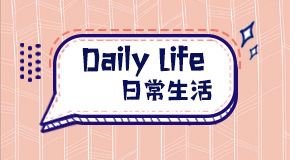Experiencing Chinese Culture
体验中国文化

Course Syllabus 课程章节
1First of all, prepare some necessary materials like ink, cotton paper, cloth and ropes. Then let’s make a rubbing parcel. Wrap cotton in a piece of cloth and tie it with a rope. Spread the paper flat on stone carvings and spray them wet and compacted to dry. Then dip the rubbing parcel in ink and beat them layer by layer on the paper until the stone carvings are clearly seen as rubbings. Rubbings were written in China as early as Sui Shu, which is an important classical history book described Sui Dynasty. It is recorded in Jing Chronicles that for more than a thousand years, people have been mainly used it to copy stone carvings and documents, also known as plane rubbing. In the Jiaqing and Daoguang years of the Qing dynasty, the full-form rubbing (three-dimensional rubbing) of bronze ware were invented. The difference between the full-form rubbing and the plane rubbing is that it displays the real object in the original three-dimensional form on a flat sheet of paper. It is called "the originator of photography." "It is the highest state of the development of rubbing techniques, and it continues to this day. Chen Xu's "Rubbing Trace" art is no longer like a single plane rubbing, three-dimensional rubbing, copy rubbing or other rubbing methods, but a comprehensive cultural document and object, using the rubbing technique to present and complete the realistic art work. "Rubbing Trace" art is an independent sect of art, which integrates all different kinds of techniques and broke new ground at the same time. The subjects of his works are unprecedented and involved everything. With his unique creativity and ingenious conception, he casts 100% realism of what people see or don't commonly see in their daily life, using artistic means to combine and cast the works into one. "Rubbing Trace" is an innovative way of spreading and inheriting immovable cultural relics to bring it into alive, which insists on protection, utilization, inheritance and development, and promoting cultural relics to become a source of strength for cultural confidence. Mr. Chen Xu's rubbing works involve eight parts including Traditional Gold and Stone, Chinese Classical Financial Culture, Shanxi Merchants Culture, Religious Culture, Chinese Kungfu Culture, Awakening Songshan, Artistic Creativity and Chinese Characters. Observing his works, one can not only feel the beauty of art, but also get a real touch on history. His works are truly "boned, moral, and warm", and integrating values of ideological, artistic, and ornamental, which can give viewers value guidance, spiritual direction, and aesthetic enlightenment. In particular, the parts about the culture of Shanxi merchants and the history of Chinese classical finance have made good historical footnotes for the Chinese merchants who explored the business road bravely and connected the world from a physical point of view.




